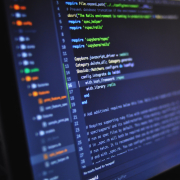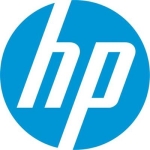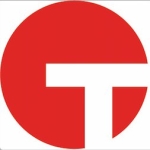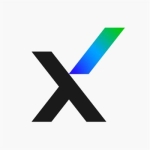We use SentinelOne Singularity Complete to detect and respond to "unknown unknowns," which are threats that haven't been previously identified. Our process involves monitoring for any unusual activity or deviations from typical program behavior. This includes analyzing parent and child processes to ensure they're loading correctly and not communicating with unauthorized external servers for remote execution.
For example, I encountered a phishing email that triggered an investigation. Fortunately, Singularity Complete offers an event log feature that allows me to analyze the incident. The tool's built-in Advanced Detection Analytics functionality helped me identify the downloaded file, and its access time, and track its interactions with applications, including attempted installations. Furthermore, Singularity Complete boasts a rollback capability, enabling me to revert to a safe state before the malicious activity occurred. I've utilized this feature successfully for several clients.
In addition to Singularity Complete's event log and rollback functions, it excels in antivirus detection. It effectively identified even sophisticated threats like the MimiKatz attack, which attempts to escalate user privileges in Linux and Windows systems. The tool's signature-based detection proved valuable in this instance.
Automating threat resolution has significantly improved our security operations. On average, I scan around forty million files, and the detection rate has been quite good.
The integration capabilities significantly enhance my existing security environment. It is a night and day difference compared to CylanceOPTICS by BlackBerry, which I used previously. While CylanceOPTICS was good, it relied on an algorithmic approach that flagged millions of potential threats, resulting in some false positives that needed manual analysis and training. SentinelOne, on the other hand, leverages eleven different engines simultaneously, including AI, machine learning, heuristics, and dynamic and static scans. This comprehensive approach offers robust protection, and if something falls through the cracks, it can consult a cloud database for the latest threat intelligence. Beyond its detection capabilities, SentinelOne offers exceptional visibility and control. I can easily investigate events at any time, like tracking who accessed Yahoo Finance within my organization across specific timeframes. The global tenancy feature empowers me to apply scans and threat signatures across different segments or even my entire network, ensuring consistent protection. The more I explore SentinelOne's features, the more impressed I am. It's incredibly powerful and versatile, offering a level of security and control that far surpasses my previous solution.
The interface is user-friendly, but there's a learning curve due to its extensive capabilities. Navigating for someone unfamiliar with threat hunting can be challenging as they may need to explore every option. However, some features have tooltips explaining their function when hovered over.
Accessing the knowledge base often requires a partnership with the company. While I lack this access, my distributor provided the comprehensive admin guide.
Ranger is an excellent feature for threat scanning. While alternative pen testing tools like Digital Defense exist, Ranger offers a unique advantage. It utilizes SentinelOne agents as probes within the network, allowing scans for irregular connections and identifying devices without the agent. This provides a comprehensive view of potential vulnerabilities. Imagine we decide to deny access to certain devices. In that case, every agent with those policies implemented, throughout our network, would individually isolate their traffic. This isolation prevents communication with the rogue devices. Consequently, even if one of those devices harbors a threat, it's unable to move laterally within the network. All other devices, recognizing it as unauthorized, will refuse to communicate with it.
Ranger requires no additional agents, hardware, or network modifications. It's essentially a built-in feature of the existing agent. Therefore, if we have the module, we already possess the capability. Activation can be done remotely through the cloud. So, when we decide to upgrade to Singularity Complete, they'll offer us the option of adding Ranger Plus. If we agree, a small additional fee, typically around a few dollars, will be applied per client. While it might seem a bit pricey, considering the value it provides, I believe it's worth the investment. It translates to roughly five dollars per client. For instance, with 50 machines, the monthly cost would be $250. In my experience, it hasn't significantly increased my expenses. There might be a slight increase, but I haven't noticed any substantial impact.
SentinelOne Ranger effectively prevents vulnerable devices from being compromised by isolating their network traffic. This feature is just one of many within the SentinelOne platform, which includes a built-in router and firewall integrated directly into the agent. This integration allows for seamless compatibility with Windows firewalls and offers granular control over network traffic. For example, Ranger enables modification of the firewall's IP stack, granting the ability to isolate specific traffic based on defined rules. This can be particularly useful for segregating vulnerable devices and preventing their communication. While not recommended for general use, advanced users can leverage SentinelOne's Singularly Complete feature on, for example, a VMware server to further isolate vulnerable devices. By running the client software on a separate network from the server, administrators can block unauthorized traffic based on Ranger's or the agent's identification. This effectively isolates the vulnerable device, even if it's compromised since it lacks any incoming network traffic. The server acts as a default gateway, filtering and controlling all incoming traffic.
Singularity Complete can help reduce alerts when a threat is identified and a solution is implemented. However, if a threat is known but no solution is available, using Singularity Complete might increase alerts. This is because suppressing alerts for a known threat without addressing it can create a false sense of security. While Singularity Complete allows manual blacklisting of threats, it cannot import large lists of threats from spreadsheets in one go, a feature available in CylanceOPTICS. This can be time-consuming for dealing with many threats. Overall, Singularity Complete has improved in its alert management, but it remains average compared to competitors. While detection is excellent, the alerting system still requires some refinement.
As a threat detector, I perform threat analysis to quickly identify threats. This has significantly reduced the time I spend on analysis, allowing Singularity Complete to free up about 30 percent of my time for other tasks.
Singularity Complete has achieved a 15 percent reduction in our mean time to detection. This efficiency gain is powered by eleven different detection engines running concurrently, ensuring comprehensive identification of potential threats.
Singularity Complete can reduce our mean time to respond by providing a clear path to the root cause of an attack. However, it doesn't always do this, and sometimes further investigation is necessary. Nevertheless, the tool significantly speeds up the process of identifying the root cause. For example, imagine the timeline indicates a suspicious file was executed. We can use Singularity Complete to find out when it last ran in our environment, even if it wasn't detected on the same day. If the threat appeared recently but the file ran a month ago, it suggests a potential Trojan was planted. This prompts further investigation into how the file arrived on the system. It could have been introduced through a USB drive, email attachment, copied file, or existing on a network share. While Singularity Complete won't explicitly state the location like "Share five," it will provide a hash that can often lead us to the network path.
Singularity Complete helps manage costs by eliminating the need for additional products with overlapping functionality. This saves us thousands of dollars per month on full scans, as our existing agent already possesses that capability. By deploying it across all organizational agents and enabling Ranger, we can conduct daily scans that provide comprehensive insights into our network activity.
Singularity Complete has helped reduce our organizational risk. However, it's important to remember that no system is foolproof. While I haven't experienced a security breach since installing it, I deliberately expose some machines to potential threats to test and observe new attack techniques. To strengthen our security posture, I've implemented additional measures. Some machines have less aggressive scan and detection settings to simulate vulnerabilities and observe attacker behavior. Additionally, our network is layered, with weaker points that serve as honeypots, while critical systems are protected by stricter security protocols. Beyond Singularity Complete, we utilize Palo Alto Networks and FortiGate firewalls for further protection. Ultimately, the decision to invest in additional scanning capabilities depends on the cost and our overall security strategy.
The most valuable feature is the ability to drill down into individual sequences of processes. This allows for building a highly detailed timeline of events, which is incredibly helpful. Additionally, the quality of the intelligence provided is excellent, making it difficult to choose between the two. The solution effectively reveals the attacker's tactics, including the mechanism or injection method used, how they exploit vulnerabilities and their use of decoys or misdirection tactics like dequay attacks. They may target one area initially, then shift focus to another, potentially planting seeds for future attacks. Overall, the timeline, intelligence, and overall capabilities of SentinelOne Singularity Complete are highly impressive.
Everything operates in real-time, allowing us to conduct in-depth analysis to uncover previously unknown threats. This capability stems from the use of dynamic libraries, which enable flexible code execution. The key concept here is the ability to pivot within an application. We can dissect and analyze this pivoting behavior, which is a rare feature among software solutions. Additionally, the system allows us to create our custom signatures. By identifying a threat and performing a global search, we can locate other instances of the same threat across our network and establish correlation points. Subsequently, we can create a signature based on a unique identifier (story ID) and integrate it into the initial login scan. This enables us to proactively detect and respond to any attacks that utilize that specific signature, making it a powerful tool for threat prevention.
The uninstallation process for the SentinelOne agent could be improved. While it is currently possible to uninstall through the console, it can be more complex if registry modifications are required. Streamlining this process, especially for users with console access, would be a valuable improvement.
I encountered issues running Singularity Complete alongside other machine-learning tools. The program uses hooks, which we configure through a whitelist to specify allowed functionalities for each app. However, I've observed compatibility problems with certain applications. This seems to stem from my limited access to information from those companies, hindering the creation of effective hooks.
For example, an external scanner's EXE file might not provide hooks for features like memory protection or script locking, potentially conflicting with SentinelOne's capabilities. In my experience, Singularity Complete doesn't always play well with others. While it coexists with Kaspersky's detection without issue, enterprise AI solutions employing algorithmic scans or pre/post-execution analysis can pose problems. We might need to modify the whitelist due to unavailable information about the application's memory range. Sharing this information could create vulnerabilities, so companies understandably keep it confidential. While I believe CylanceOPTICS could likely work with Singularity Complete, I haven't achieved it because I prioritize optimal protection. Disabling all CylanceOPTICS features and putting it in uninstall mode allows it to function but without intervention. In such cases, CylanceOPTICS detects threats first, possibly due to its higher application number in Windows. Similar behavior has been observed with other products.
Deep Instinct is another excellent detection software I use for remote devices. Expanding Singularity Complete's coverage to include IoT devices, Linux, servers, Docker, and mobile platforms (currently limited to Deep Instinct on my devices) would be highly beneficial. While Deep Instinct allows uploading and installation via email code, Singularity Complete currently lacks this functionality.
I've only had one interaction with their tech support, but it was excellent. In situations where we're struggling with an investigation, I believe they have a guardian contract that could allow them to analyze our findings. Alternatively, if we're having difficulty detecting something, they can guide us through the process. However, my access to their tech department was limited to a single instance when I needed it. The impressive part is that they were willing to help me even though I was from a partner company. Such helpfulness is rare in many organizations, which often require expensive fees before offering similar assistance.
Previously, we used CylanceOPTICS by BlackBerry but transitioned to SentinelOne Singularity Complete due to its enhanced user-friendliness. The latter platform boasts comprehensive investigation capabilities, allowing us to delve deeper into the specifics of security incidents. We can examine parent-child relationships, delve into registry entries, and analyze memory ranges with ease. The feature set is truly extensive.
While CylanceOPTICS offered some of these functionalities, it could not identify pivoting areas within an attack. If I needed to investigate the pivot itself, CylanceOPTICS wouldn't suffice. SentinelOne proves invaluable in such situations. By examining registry entries or monitoring running processes, it helps us pinpoint the root cause, be it a Run DLL or a Windows EXE file disguised as innocuous activity. While CylanceOPTICS might catch the attack, it wouldn't reveal the underlying malicious intent. SentinelOne grants us this crucial level of insight, empowering us to respond effectively.
I rate SentinelOne Singularity Complete a nine out of ten. While the product itself is impressive, the price point is on the higher side. The only drawback is the limited support access. If they offered more affordable support options or provided unrestricted access to their knowledge base, I would easily give it a ten. Unfortunately, they haven't implemented this yet, as it would unlock more resources and expertise for users. Ultimately, it is what it is, but hopefully, they'll consider these improvements in the future.
In my environment, I support a law firm and a music company while pursuing my research. Additionally, I use Intel hardware for testing purposes. My security strategy prioritizes avoiding complete system reimaging whenever possible. While I have encountered compatibility issues with specific SentinelOne versions and certain software, these were primarily during testing when I intentionally introduced malicious files. In general, the software has proven effective in preventing and mitigating threats.
SentinelOne Singularity Complete has been excellent in its ability to be innovative.
While SentinelOne Singularity Complete is well-established software, the developers continuously strive to improve it. After all, no software ever truly reaches complete maturity. To remain effective, we must constantly adapt, improve, and refine ourselves in response to evolving threats and technologies.
I'd love to partner with SentinelOne right now, but as a small business, cost is a major concern. That's why I'm working with a distributor. They purchase larger license blocks, like five thousand or ten thousand, and because I was one of their early customers, they granted me access. While I have a partnership with them, it's not a formal one. To my knowledge, they require organizations to have at least one hundred or two hundred seats to be considered for a true partnership. I'm unsure if a program exists for smaller businesses, but based on what I've seen, access to their knowledge base, support team, etc., seems to be restricted to contracts with a minimum seat capacity of one hundred or two hundred.





















